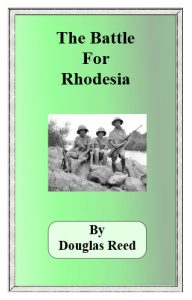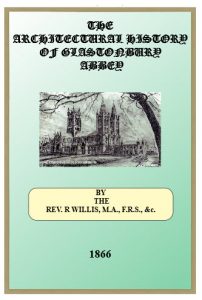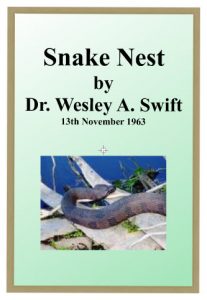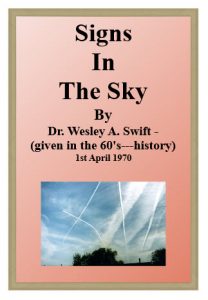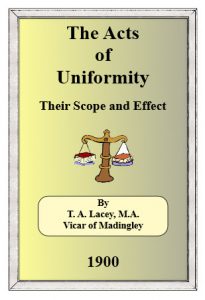RESPECTED READER, To those of you who know my books (a diminishing band: but aren’t we all?) and to those who know them not, let me recall that in 1936, sitting at a window in Vienna, I wrote a book, Insanity Fair, about the coming Second World War. In 1966, sitting at a window in Salisbury, Rhodesia, I find myself writing this book about the coming of a Third World War. This is where we all came in. The scene has shifted from Europe to Africa, but the new post-war years have seen the same ladder like process calculably leading to war.
In these latter years I did many things, and writing was of the things undone, for my writ, I felt, ran out. There was only the oft-told tale to re-tell and its constant iteration came too near the praising of myself, for every fool can play upon words. If “warnings” were needed, let others warn, and probably in vain, for by a divine instinct men’s minds mistrust ensuing danger. So I sought other paths and spent many years in South Africa.
Man proposes: looking for pastures new, I found myself in the centre of another world conflict in the brewing. Africa was this time the scene of the preparatory steps, and Southern Africa the last rung of the war-ladder. The British Government’s onslaught on Rhodesia, in 1965, returned the world to its plight of 1937, when war was two moves away and could yet have been averted by obvious countermoves.
Let me briefly recall those days to you, senior and junior classmates. From 1933 Hitler’s patent intention to make war was fore-told by all competent observers in Berlin. Even the date (about five years ahead) was accurately estimated, in its dispatches to London, by the Berlin office of The Times (where I was a correspondent).
The London government, however, to the end encouraged Hitler on his warpath by the method called “appeasement” (throwing children to pursuing wolves until only the parents remain, in the fleeing sleigh, for the wolves to devour). German rearmament was let pass, then the seizure of the Rhineland, then the recreation of the German air force (in 1935 Hitler personally told the British Foreign Minister of its massive strength, as I then reported).
Download Tag: Scripture
The Architectural History of Glastonbury Abbey
THE ABBEY OF GLASTONBURY is one of those to which a peculiar interest has been always attached. The boldness of its legendary history, which claims for its site the privileges of being that on which the first Christian church was erected in our island, and the burial-place of King Arthur and Joseph of Arimathea : also the peculiar architectural character and beauty of the chapel which now bears the name of St Joseph, its singular plan and position; and lastly, the picturesque remains of the great church itself, little inferior to the chapel in beauty, and of the celebrated kitchen and barn;—these furnish sufficient grounds for the interest which has been maintained up to our own time, and has made this place the theme of so many writers, ancient and modern, that the subject might appear to have been exhausted in all directions.
Yet it must have been perceived by the readers of these writers, that the interpretation of the documentary evidence, with reference to its application to the buildings, is still enveloped in indecision and conjecture.
Yet few monasteries have left to us a better collection of historical documents, including the memoranda of Leland and William of Worcester, both written before the Reformation, or furnish a more instructive example of the manner in which such buildings were carried on and altered. My first acquaintance with these venerable ruins in 1863 convinced me that the cloud of vague conjecture which still hung over their architectural history might be partly dispelled by a personal and repeated study of the structures themselves, combined with a careful analysis of the chronicles and records, selecting from them those passages only which have reference to the arrangement and purposes of the buildings, the time and mode of their construction, the manner of raising funds for that object, and the motives which caused them to be undertaken.
This in fact is the system that I have pursued throughout my researches into the Architectural History of so many Cathedrals and Monasteries, and the following pages contain the result of its application to Glastonbury. Several visits to the ruins, employed in sketching and measuring; alternating with the home examination at leisure, of the documentary evidence; have emboldened me to assert with confidence the identity of the so-called chapel of St Joseph with the Lady chapel of the Abbey church and with the site of the original wicker church or “Old Church,” the “Vetusta Ecclesia” of William of Malmesbury, and thus not only to fix the date of this most valuable piece of transition work to the year 1184, but to identify a spot, which, without crediting the tradition
literally which assigns the date of the “Old Church” to A.D. 63, was certainly occupied by one of the very earliest of the British churches.
I have pointed out that the tradition of the visit of Joseph of Arimathea, hinted at by Malmesbury, and evidently neither really credited by him, nor held forth as one of the prominent attractions of the site up to his time or that of his continuator Adam de Domerham, was brought into excessive importance and made a source of profit and honour to the Monastery in the fourteenth century. Thus, finally, the popular name of St Joseph’s chapel has superseded the original dedication of the Lady chapel.
Lastly, I have shewn that the crypt is entirely a construction of the fifteenth century, inserted in a building which had no previous crypt, and have endeavoured to explain the steps by which this remarkable undertaking was carried out. As far as I know, this fact has escaped all previous writers.
The Anglo-Saxon Chronicle
ENGLAND MAY BOAST of two substantial monuments of its early history; to either of which it would not be easy to find a parallel in any nation, ancient or modern. These are, the Record of Doomsday (1) and the “Saxon Chronicle” (2). The former, which is little more than a statistical survey, but contains the most authentic information relative to the descent of property and the comparative importance of the different parts of the kingdom at a very interesting period, the wisdom and liberality of the British Parliament long since deemed worthy of being printed (3) among the Public Records, by Commissioners appointed for that purpose. The other work, though not treated with absolute neglect, has not received that degree of attention which every person who feels an interest in the events and transactions of former times would naturally expect. In the first place, it has never been printed entire, from a collation of all the MSS. But of the extent of the two former editions, compared with the present, the reader may form some idea, when he is told that Professor Wheloc’s “Chronologia Anglo-Saxonica”, which was the first attempt (4) of the kind, published at Cambridge in 1644, is comprised in less than 62 folio pages, exclusive of the Latin appendix.
The improved edition by Edmund Gibson, afterwards Bishop of London, printed at Oxford in 1692, exhibits nearly four times the quantity of the former; but is very far from being the entire (5) chronicle, as the editor considered it. The text of the present edition, it was found, could not be compressed within a shorter compass than 374 pages, though the editor has suppressed many notes and illustrations, which may be thought necessary to the general reader. Some variations in the MSS. may also still remain unnoticed; partly because they were considered of little importance, and partly from an apprehension, lest the commentary, as it sometimes happens, should seem an unwieldy burthen, rather than a necessary appendage, to the text. Indeed, till the editor had made some progress in the work, he could not have imagined that so many original and authentic materials of our history still remained unpublished.
To those who are unacquainted with this monument of our national antiquities, two questions appear requisite to be answered: — “What does it contain?” and, “By whom was it written?” The indulgence of the critical antiquary is solicited, whilst we endeavour to answer, in some degree, each of these questions.
Snake Nest
WE ARE TURNING TONIGHT TO A SUBJECT WHICH TO SOME MIGHT SEEM TO BE BUT A PATTERN OF SYMBOLS. We are talking about the ‘snake nest.’ There is probably nothing more important for America and the Christian nations to know and to understand than this secret of the ‘snake nest,’ and the generation of the Serpent and the Viper. There is not any doubt today that any student of world affairs can well understand the master strategy of Lucifer if he is Bible informed. If he is not Bible informed and recognizes it, then he will probably join it. There is then nothing as important for you to know tonight than God’s purpose and plan for the earth.
As we cited to you this afternoon, in the address, there come a vital ‘assurance’ which becomes a vital asset to the individual when he knows what god plans, when he knows the laws of God and the purposes of God. And thus this knowledge synchronizes his thinking of the plans of God, and he participates in it. When you know what God is going to do and you believe in what God is going to do, then you possess assurance. And we tell you that we living in this vital hour, are aware of all of these situations which the bible has made clear and prophecy has unveiled, and now the panorama of world events in the guidance as God unfolds it to HIS children. It gives you a complete picture of all the things now taking place in the earth. And it also challenges you for your participation in these series of events. You will never by able to extricate yourself from relations to the Kingdom because you are children of the Kingdom. There is no place to take yourself out of the picture. And there is no place for you to go and retire and get out of all of this.
Slaying The Dragon in The Sea
A GREAT NUMBER OF PEOPLE MIGHT WONDER WHAT THIS STATEMENT ‘SLAYING THE DRAGON IN THE SEA’ really means and from whence it comes. But if we could take you for one moment into the book of Isaiah where in the 27th chapter of Isaiah the Eternal speaks, ‘In the day YAHWEH, with HIS great and strong sword, shall punish Leviathan the piercing serpent, even Leviathan, that crooked serpent; and HE shall slay the dragon in the sea.’ Strange as it might seem, the ancient wisdom known to your forefathers from the time of the revelations given to Enoch of the unveiling of the symbols of the constellations of the heavens, and incorporated into all the schools of wisdom of your race, were things which were in mystery and in symbol, and the mystery of the Dragon, and this Dragon out of the sea was known unto them.
And as where it might seem a strange thing, but to those who have travelled through the long course of Masonic rituals, and its background, will remember also that one of the elements in the pattern of victory was over the Dragon out of the Sea, the symbol of the Dragon, the symbol of this transplanting of the Dragon to earth. And then the earth, the great battle field between the Dragon and the Hosts of the MOST HIGH GOD, was declared in symbolism and so understood by our forefathers that it was incorporated into their sacred literature. It was incorporated into their mysteries, but it was one of the things that they thoroughly understood. There was never any disillusion on their part, but that they were to take part in this objective. Very, very clearly, this naming of the Dragon and the identification of it was known.
Winston Churchill British Bulldog
WINSTON CHURCHILL has been the most colourful and picturesque leader of the British Tory Party since Benjamin Disraeli. For half a century he has been a challenging figure in our public life. After the outbreak of the Second World War he became as well known in Europe and America as at home, and his admirers regard him as the greatest Englishman of our time. During the war it became almost treason or sacrilege to criticize Mr. Churchill. He was regarded as the voice of Britain, the great heaven-sent leader who had emerged in our dire peril to save us and guide not only Britain but the Western and democratic world to victory over the forces of darkness.
No wonder the Tory Party, in its desperation, decided to cash in on his wartime reputation as our deliverer. Indeed, he was about the only asset the discredited post-war Tories had, and they have played him up, with his manifest approval, to the limit of their ability.
So there has grown up a Churchill legend: of Churchill the one and only national leader who is capable of being the head of a British Government in difficult times, of a man who was always right in the years prior to the war and who during the war guided us with supreme wisdom. The Tories have done their best to bask in his reflected glory, forgetting that the harshest and truest things Winston Churchill ever said in his life were about them.
But there is more to be said about Winston Churchill than is to be found in his own many volumes on war and politics, his autobiographical reminiscences, and the adulatory biographies that have been published in recent years.
Mr. Churchill has contributed copiously to the history of our time, and, of course, no man can really be expected to be completely objective about himself. The prima donna is not the most reliable critic of her own performances. Reading Mr. Churchill’s
memoirs is very much like reading an appreciative drama review written by the actor who has also played the part of hero in the production. Mr. Churchill’s war books are, in the main, justifications and apologia for his own performances.
Now, nobody will deny that Winston Churchill has been pugnacious, courageous, an outstanding personality, a champion all-in wrestler in the political conflicts of his day, that his speeches have been eloquent and have stirred the multitudes, that he has a great command of the English language, that he can tell a good story, that he has a gay versatility and a sense of humour and other qualities which appeal to a large number of the British people, even to many who would rather be carried out of the polling booth dead than vote for him or any of his Tory candidates.
Signs in The Sky
ALONG ABOUT THE MIDDLE OF SEPTEMBER, shining out of the sky from beyond the darkened areas of the moon came ships on the move. People watched them expand and grow in size. And from the various observatories which they passed it was estimated that they were moving about 1,500 to 2000 miles per hour. They saw these fleets high up over the mountains of Colorado. And these moving lights swerved and turned to the north and dipped down over a high ridge, and no one saw them again. This was the beginning about two weeks after that the announcement came out that we had landed some flying saucers, created by the U. S. of America which had been making a unique study of these so called flying Saucers. And that this had been a very closed operation, concerning our areas of defence.
Well we had had certain information as to whether this had transpired in this manner. We discovered that there was a high plateau somewhere in Colorado that was the area of these secret sightings. We discovered that this project was conducted at one time under the chairmanship of Col. Lindberg, who was in the air force. But one thing that he demanded was that there would be no Jews in this work which he was conducting. He suggested that if you brought the Jews into the operation that they would always be suspect as spies of the Soviet Union.
The Acts of Uniformity
THE ACTS OF UNIFORMITY ARE INCIDENTS IN A GREAT MOVEMENT. They are far from being the most important of its incidents. Their importance has perhaps been exaggerated, and their purport is commonly misunderstood. My object is to place them in their true relation to other incidents. It is useless to study them apart; they cannot be understood except as details of a connected history. I shall confine myself, however, to a narrow, question: assuming the general history, I shall ask how the several Acts of Uniformity come into it, with what purpose and with what ultimate effect. To study immediate effects would be to engage in too wide an inquiry.
We owe thanks to the men who drafted the statutes of the sixteenth century for their long argumentative preambles. These are invaluable as showing the occasion and purpose of the Acts. We shall not go to them for an uncoloured record of facts—their unsupported assertions will hardly, indeed, be taken as evidence for facts at all; but they tell us to what facts the legislator wished to call attention, and in what light he would have them regarded. The preamble of the first Act of Uniformity is among the most illuminating, and with its help we can assemble the facts in relation to which the purport of the Act must be determined.
We are in the year 1548. Important changes in matters of religion had taken place; greater changes were in prospect. The processions before High Mass on Sundays and Festivals, conspicuous and popular ceremonies, had been stopped on rather flimsy grounds, and a Litany in English substituted—the “English Procession,” as it was called. Many images in the churches had been destroyed, as superstitious; the censing of those remaining had ceased.
The Testimony of Charlotte Wells
THE TESTIMONY OF SISTER CHARLOTTE IS DISTURBING AND SHOCKING, but provides important insights into the worst of convent life as well as the dynamics of Romanism. It testifies with others such as “Maria Monk” and “The Martyr in Black The Life Story of Sister Justina” (Lord willing, both of these will be on the site one day) as well as the testimonies of former priests such as Chiniquy (The Priest, the Woman and the Confessional), Fresenborg (Thirty Years in Hell), and Hogan (Auricular Confession and Popish Nunneries). Sis. Charlotte’s testimony seems incredible but only because most people do not know the history of the Romish religion. One of our readers said this about Sis. Charlotte’s testimony–
Thank you for printing this testimony, I have been so troubled by what I have read and I can believe what she said because I worked as a waitress. And the priest and nuns would come in [and] order drinks while wearing the habit. I had a friend that confronted one of the priests and boy what a big blow up that was. He tried to get her fired and then they really started coming in with the habit on and getting drunk. We told them that it didn’t look good for children to see them drinking especially when they were godly people (in the children’s eyes.) It was very eye opening to say the least. So I can understand some of what the woman said. I would really like to pray for those other nuns. thank you for your site and information. SR
Here’s an excerpt from a modern day Roman cloistered nun:
(http://www.passionistnuns.org/vocationstories/findinglove/). This quote is supposed to make a convent sound good but read between the lines and you get a hollow feeling…
Being a Passionist Nun: I had always desired to enter more deeply into the mystery of Jesus’ love for us in His sacred Passion. Where better than a Passionist Monastery where one takes a vow to promote devotion to and grateful remembrance of the Passion of Jesus? Flowing out of this main vow we take four other vows: Chastity, Poverty, Obedience and Enclosure. Prayer, penance, poverty, silence and solitude are a very important part of our spirit handed down to us by our Holy Founder, St. Paul of the Cross. Also, a deep love for our Spouse, Jesus in the Eucharist [a cracker Romans call “Jesus”]; devotion to our Immaculate Mother and fidelity to the Magisterium of the church attracted me to this hidden way of life, where prayer knows no bounds.
I think a lot of these women feel empty and want to get close to God. They think they have to “leave the world” for a religious life and of course the priests and nuns are happy to suggest joining a religious order. Not, “Get washed in the blood of the Lamb and born again,” but “Join our convent or monastery”.
Television and The Hive Mind
SIXTY-FOUR years ago this month, six million Americans became unwitting subjects in an experiment in psychological warfare.
It was the night before Halloween, 1938. At 8 p.m. CST, the Mercury Radio on the Air began broadcasting Orson Welles’ radio adaptation of H. G. Wells’ War of the Worlds. As is now well known, the story was presented as if it were breaking news, with bulletins so realistic that an estimated one million people believed the world was actually under attack by Martians. Of that number, thousands succumbed to outright panic, not waiting to hear Welles’ explanation at the end of the program that it had all been a Halloween prank, but fleeing into the night to escape the alien invaders.
Later, psychologist Hadley Cantril conducted a study of the effects of the broadcast and published his findings in a book, The Invasion from Mars: A Study in the Psychology of Panic. This study explored the power of broadcast media, particularly as it relates to the suggestibility of human beings under the influence of fear. Cantril was affiliated with Princeton University’s Radio Research Project, which was funded in 1937 by the Rockefeller Foundation. Also affiliated with the Project was Council on Foreign Relations (CFR) member and Columbia Broadcasting System (CBS) executive Frank Stanton, whose network had broadcast the program. Stanton would later go on to head the news division of CBS, and in time would become president of the network, as well as chairman of the board of the RAND Corporation, the influential think tank which has done ground-breaking research on, among other things, mass brainwashing.
